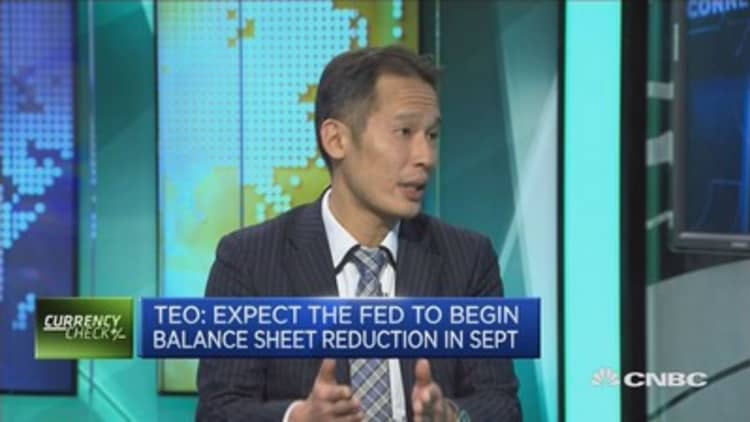The pound jumped on Wednesday after a Bank of England policymaker said he expected to back an interest rate hike this year while commodity-linked currencies such as the Canadian dollar and Norwegian crown took a hit on declining oil prices.
BoE chief economist Andy Haldane said he was likely to back an increase in interest rates in the second half of this year, which saw sterling surge by almost half a cent, briefly trading above $1.27 and reversing a drop below $1.26 earlier.
Haldane's comments struck a more hawkish tone than BoE governor Mark Carney who in a speech on Tuesday said now was not the time to raise interest rates.
The comments also highlighted a developing split at the central bank, with three out of eight BoE policymakers voting in favour of a rate hike last week.
"The Haldane comments are potentially more significant than the vote last week to the extent that he is firstly a Bank of England insider and secondly he has typically been one of the most dovish members," said Adam Cole, head of FX strategy at RBC Capital Markets in London.
"If his opinion is shifting then that is potentially significant news for rates going forward."

Short sterling contracts for December of this year reversed all of their gains since Carney's speech, pricing in a greater than 50 percent chance of the Bank raising rates by then.
Investors were also closely watching political developments in the UK, with Prime Minister Theresa May's Conservative Party still in talks with Northern Ireland's Democratic Unionists Party (DUP) to form a government.
"The political risk premium embedded in the pound looks like it is set to extend into next week with the DUP and the Conservative Party still not finalising talks," said Stephen Gallo, currency strategist with BMO Capital Markets in London.
Oil prices held near multi-month lows on Wednesday as investors discounted evidence of strong compliance by OPEC and non-OPEC oil producers with a deal to cut global output.
That pulled the commodity-linked complex of currencies lower with the Norwegian crown languishing close to 5-month lows against the dollar. It last traded at 8.5456 crowns per dollar, down 0.1 percent on the day.

The Canadian dollar traded at C$1.3289 per dollar, down 0.2 percent on the day and further off from a 3-1/2-month high of C$1.3165.
The Australian dollar fell 0.2 percent to $0.7562 and the New Zealand dollar was 0.1 percent lower at $0.7232 .
Investors will look to the Reserve Bank of New Zealand for its interest rate decision due later on Wednesday.
"The culprit behind their (commodity currencies) lacklustre performance is the oil price in recent days," said Valentin Marinov, head of FX strategy at Credit Agricole in London.
"The key question for the FX markets on the day is the extent to which the oil price weakness will ultimately grow into a broad-based risk-off move."
The safe-haven , which tends to gain when "risk-on" commodity currencies decline, was mixed to 111.37 yen per dollar.
The dollar was 0.2 percent lower against a basket of peers at 97.604.
The euro was 0.1 percent higher at $1.1148, off a seven-month peak of $1.1296.

